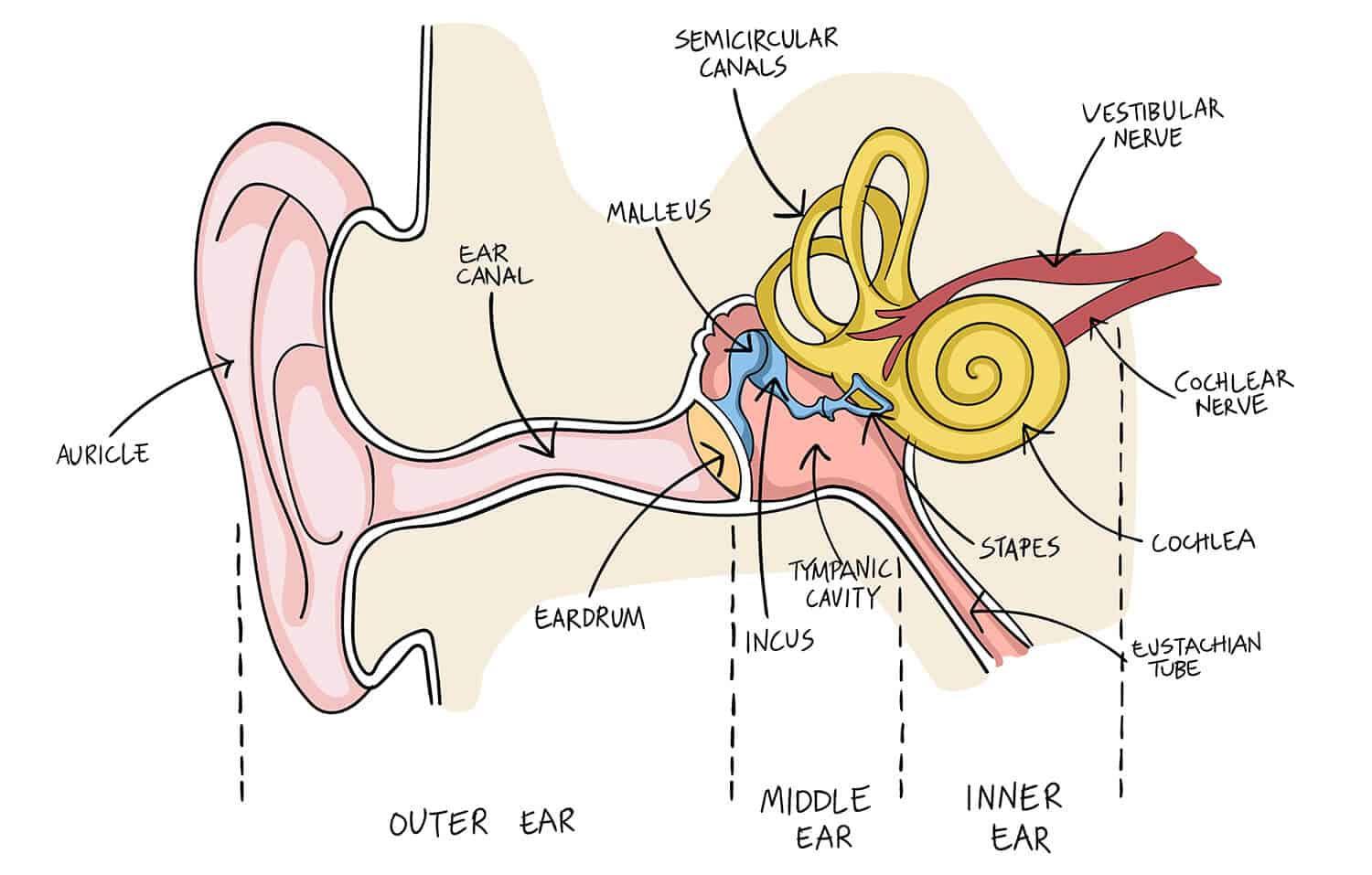About Hearing Loss
Did you know that we actually hear with our brain?

Anatomy of the Ear
The ear is made up of three main parts that work together with the brain to help you hear: inner, middle and outer.
- Sound waves, or vibrations, travel from outside the ear, through the ear canal and in to the eardrum.
- The eardrum then vibrates and transfers the sounds to small bones within the middle ear.
- This amplifies the sounds and passes them along to the inner ear where they become electrical impulses.
- Nerves transfer these impulses to the brain where they are translated into meaningful sounds.

Types of Hearing Loss
There are actually four different types of hearing loss:
conductive, sensorineural, mixed, and auditory neuropathy.
Hearing difficulties can occur from a number of factors.
Perhaps your job has exposed you to many loud sounds over a long period of time, or maybe you were exposed to a loud noise one time without proper ear protection. Age or deterioration of the hair cells in the ear can also lead to hearing loss. For this reason, not all hearing loss is the same.
The good news is that there are treatments and devices available to help with all types of hearing loss. Knowing how your ear works and what difficulties you are personally experiencing with your hearing are the keys to finding the perfect treatment for your unique situation.

